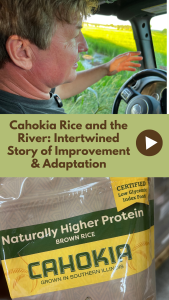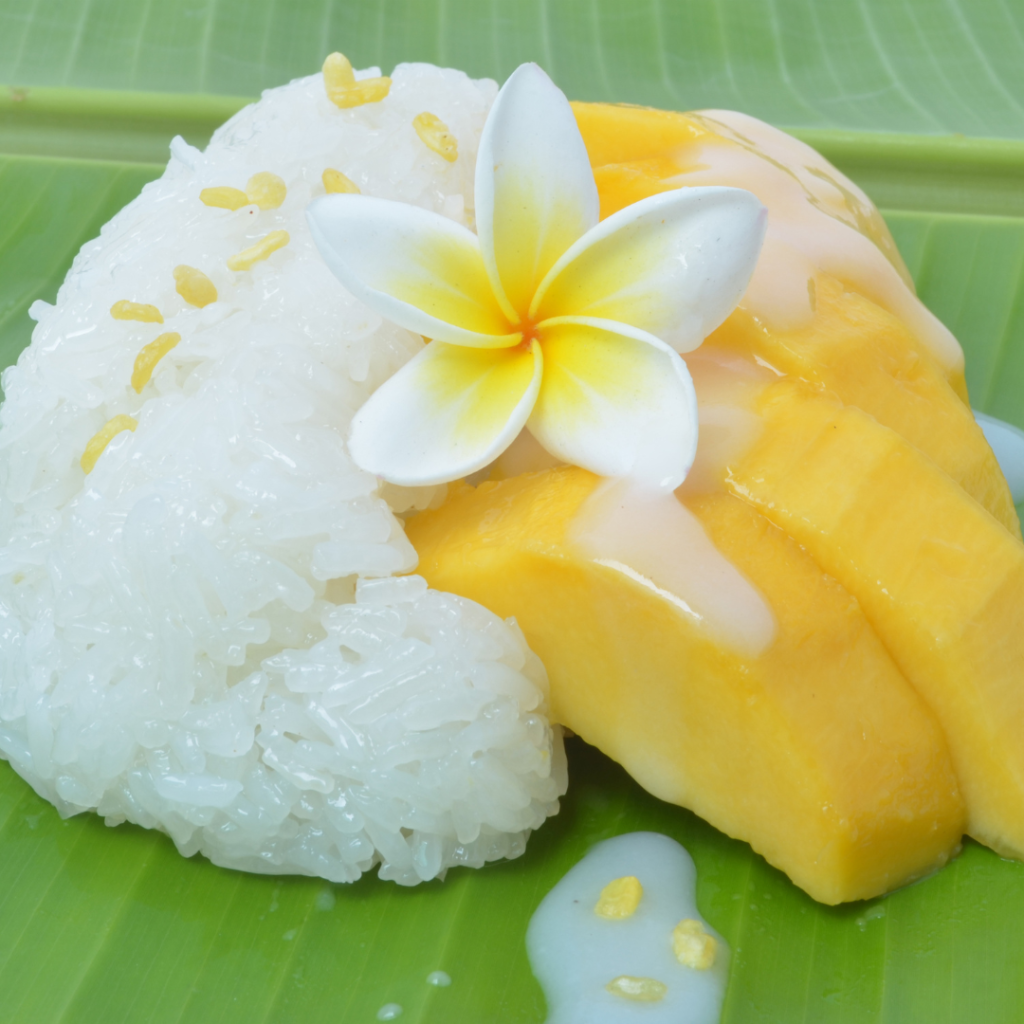Our latest episode has us talking Cahokia Rice. The name alone likely is a bit confusing as Cahokia is the incredible urban center that predates the United States and was located near today’s St. Louis. But rice isn’t exactly midwestern. So that may raise your curiosity and Cahokia Rice should because it was specially bred to deliver a higher protein content that makes it low glycemic too!
(An AI-based transcript for this episode is available.)
We talk with farmer Blake Gerard of River Bend Farms about the unique challenges of growing rice, how he came to grow and market an enhanced variety of rice, and some of the ways it’s grown. His operation is very different from many farms as he’s right along the river… so even in a year where many Midwestern farmers have had issues of drought, the water table on his farm kept everything growing.
We explore the intersection of food and farming and shed light on various environmental pieces that touch rice from filtering muddy river water into crystal clear water, thanks to the soils natural filtration powers.
Hidden Gem of Midwest Rice Farming

Illinois, a state known for its corn and soybean production, might seem like an unlikely place for rice cultivation, especially when compared to bustling cities like Chicago. But as Blake explained, the unique geographical features of this part of Illinois, combined with efficient water management techniques, create the perfect conditions for growing high-quality rice.
Since their fields are right along the Mississippi River, it’s fascinating to see how the River is their biggest asset and yet also presents some big challenges for them. Our farm tour included close looks at the levee and ditch systems used to control water flow on their farm.
Farm Tour Talking Water Control
We hopped in Blake’s Jeep and took a tour of the farm. Hope you enjoy the ride-along.
Water. So often that is a central part of any conversation about farming. Drought is the scourge for most farmers and drought seems to be hitting more frequently. And floods take away so much hard work on many farms, but Blake said having a dry year meant he had his “perfect year” everything went according to plan, including flooding. That’s because flooding rice fields is intentional and the water table along the Mississippi River made it easy this year for him to get water on and off fields when needed.
Talking to Blake shed light on the challenges faced by rice farmers when it doesn’t rain. While relying on surface water from the river is the primary method for flooding the fields, they also employ a pump on, pump off system, inspired by their friends in Louisiana. This innovative approach allows them to regulate water levels and ensure optimal growing conditions for the rice crops.
As I edited the video, I realized we may have used some words in ways that that are less familiar to folks. With that in mind, I put together a post with definitions of some of the rice farming terms we used.
A Different Kind of Rice
When we think of protein-packed foods, rice might not be the first thing that comes to mind. In fact, some of us think only of carbs. However, Blake is growing a unique variety of rice that has a great source of plant-based protein.
Blake explained that a one-cup serving of cooked rice contains approximately 4-5 grams of protein (which is about double) Another intriguing aspect of rice is its low glycemic index (GI). That low glycemic index means the rice is digested more slowly than most rice, resulting in a gradual release of glucose into the bloodstream. As a result, consuming this rice can help maintain stable blood sugar levels, avoiding dramatic spikes and crashes in energy.
A low glycemic index is sought by athletes of endurance and long-distance events, those marathon runs and cycling. Farmer Blake Gerard says as someone who likes to cycle, mentions the benefits of eating high protein, low glycemic rice brown rice for maintaining stable blood sugar levels definitely helps him.
It’s branded Cahokia Rice as a nod of respect for the native peoples who farmed that area centuries before the Gerard family arrived in the area. Blake points to some of the farming implements sharpened shone that is founf and the company sells direct and through retail, distribution and food service all.
Loving Rice on My Table
Growing up in the South, I always associated rice with daily meals, but it was interesting to learn that a lot of Midwesterners are not as familiar with dishes like red beans and rice. That is unless they have rice in their heritage or love New Orleans like I do!
But do you eat rice for breakfast on the regular? Add half and half and fresh fruit to your rice? I couldn’t wait to try Blake’s fruit and rice fusion rec but failed to take photos!
When discussing different ways to enjoy rice, Blake mentioned that he loves incorporating fruits like peaches or blueberries into his rice with half-and-half or milk.
This reminded me of my experience with mango sticky rice in Thailand, where the combination of fragrant rice, juicy mango and coconut created an irresistible treat. If you haven’t had it, look for it on menus at your favorite Thai restaurants!
Rice Fields & Waterfowl Go Hand-in-Hand
If you watched the tour video above, you no doubt heard the mallard ducks and some of the other birds on Blake’s farm and the wildlife refuge that he farms alongside.
He shared an intriguing aspect of rice farming: the importance of waterfowl, especially geese, in creating and maintaining a suitable habitat for rice fields. These birds act as natural tillage tools, mowing down the fields and stirring up the soil. Their presence contributes to soil health and water management for this farm.
As I wrapped up my conversation with Blake at River Bend Cahokia Farms, I couldn’t help but feel captivated by the intertwined story of improvement and adaptation that revolves around rice farming in Illinois. From exploring the unexpected location for rice production to discovering innovative approaches in water management, the richness of this episode truly emphasizes how farming is always evolving.
Find Cahokia Rice Online
As mentioned above, Cahokia Rice is available online at CahokiaRice.com. You can find them on Instagram @CahokiaRice, on the Cahokia Rice Facebook page and Cahokia Rice’s YouTube Channel.
Castmagic is the AI tool (link to Castmagic & give me a referral fee that doesn’t impact your cost) that helps with some of the content shared here and on social channels. It helps me do more faster since I don’t stare at a blank screen.





